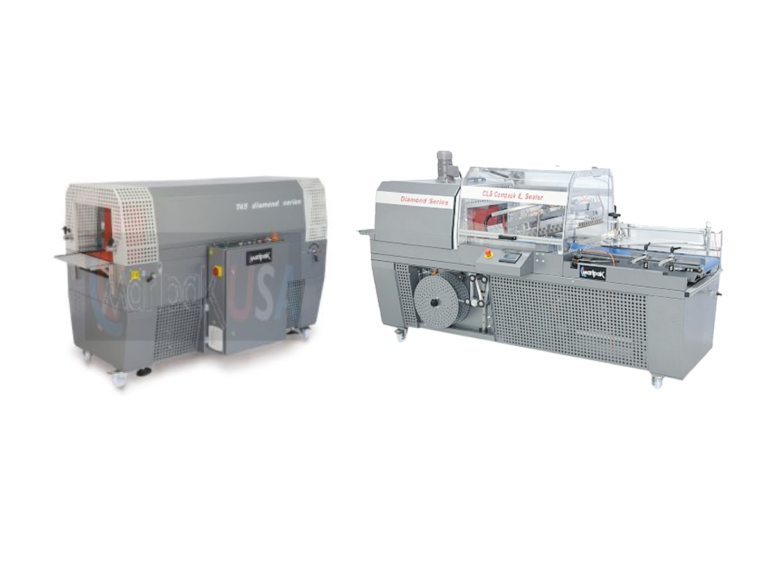In the realm of packaging technology, shrink wrappers stand out as essential tools for securing and protecting various products. From food items to industrial goods, these machines play a crucial role in enhancing both the safety and aesthetic appeal of packaged goods. We will discuss about shrink wrappers, particularly focusing on their uses and the role of heat shrink tunnels in achieving effective packaging solutions.
Understanding Shrink Wrappers
Shrink wrappers are machines designed to package products in shrink film, which, when heated, shrinks tightly around the product, providing a secure and protective layer. These machines are employed across diverse industries to streamline packaging processes and ensure product integrity during transit and storage.
Components of Shrink Wrappers
Shrink-wrapping machines typically consist of the following components:
- Film Roll Holder: Holds the shrink film roll, feeding it into the machine.
- Sealing Bar: Seals the film around the product.
- Heat Source: Applies heat to shrink the film tightly around the product.
- Conveyor System: Transports the product through the shrink-wrapping process.
Types of Shrink Wrappers
1. L-Bar Sealers:
L-Bar sealers create an L-shaped seal around the product and are suitable for packaging individual or grouped items. They are versatile and can handle a wide range of product sizes and shapes.
2. I-Bar Sealers:
Similar to L-Bar sealers but with a straight sealing bar, I-Bar sealers are ideal for smaller-scale operations and packaging products like DVDs, books, and electronics.
3. Shrink Tunnels:
Shrink tunnels use heat to shrink the film tightly around the product after it has been sealed by an L-Bar or I-Bar sealer. They ensure uniform shrinking and are essential for achieving a professional, tamper-evident package.
Applications of Shrink Wrappers
Shrink wrapping machines find extensive applications across various industries due to their versatility and efficiency in packaging. Here are some key sectors where shrink wrappers are widely utilised:
Food and Beverage Industry
In the food and beverage sector, shrink wrappers are used to package items such as bottles, cans, trays, and multipacks. Heat shrink tunnels play a crucial role in ensuring that food products are securely wrapped, maintaining freshness and hygiene standards during transportation and on store shelves.
Pharmaceutical and Medical Products
Shrink wrapping machines are vital in pharmaceutical and medical industries for packaging medications, medical devices, and hygiene products. The tamper-evident seal provided by shrink film ensures product safety and integrity, meeting stringent regulatory requirements.
Cosmetics and Personal Care
Cosmetic products often require attractive and protective packaging to enhance their market appeal. Shrink wrappers are utilised for packaging items like perfumes, skincare products, and gift sets, providing a professional and aesthetically pleasing presentation.
Industrial Products
From automotive parts to electronics, industrial products benefit from shrink wrapping for protection against dust, moisture, and physical damage. Shrink wrappers ensure that these items are securely packaged for safe storage and transportation to end-users or retailers.
The Role of Heat Shrink Tunnels
Functionality
Heat shrink tunnels are an integral part of the shrink-wrapping process, applying controlled heat to the shrink film after it has been sealed around the product. The tunnels use hot air, infrared radiation, or steam to shrink the film uniformly, conforming it tightly to the contours of the product.
Types of Heat Shrink Tunnels
Hot Air Shrink Tunnels:
Hot air shrink tunnels use forced hot air to shrink the film. They offer versatility and are suitable for a wide range of shrink film materials and product types.
Infrared Shrink Tunnels:
Infrared shrink tunnels use infrared radiation to heat the film directly, providing a targeted and efficient shrinking process. They are ideal for heat-sensitive products or films that require precise temperature control.
Steam Shrink Tunnels:
Steam shrink tunnels use steam to shrink the film. They are particularly useful for shrink films that require moisture during the shrinking process, ensuring a tight and uniform wrap around the product.
Advantages of Heat Shrink Tunnels
- Efficiency: Heat shrink tunnels automate the shrinking process, increasing packaging efficiency and throughput compared to manual methods.
- Uniform Shrinkage: They ensure even and consistent shrinkage of the film around the product, enhancing the appearance and security of the package.
- Tamper-Evident Seal: The tightly shrunk film provides a tamper-evident seal, indicating if the package has been opened or tampered with.
Choosing the Right Shrink Wrapping Solution
When selecting a shrink-wrapping machine for your packaging needs, consider the following factors:
- Production Volume: Choose a machine that aligns with your production capacity and throughput requirements.
- Product Size and Shape: Ensure the machine can accommodate the dimensions and shapes of your products effectively.
- Film Compatibility: Select a machine that is compatible with the type and thickness of shrink film you intend to use.
- Automation Level: Decide on the level of automation (manual, semi-automatic, or automatic) based on your operational preferences and workforce capabilities.
Conclusion
Shrink wrappers, coupled with heat shrink tunnels, are indispensable tools in modern packaging operations across diverse industries. Whether safeguarding food freshness, ensuring pharmaceutical safety, or enhancing product presentation, these machines offer efficient and effective packaging solutions. By understanding their types, applications, and the critical role of heat shrink tunnels, businesses can optimise their packaging processes, protect their products, and meet consumer expectations in a competitive market landscape.


